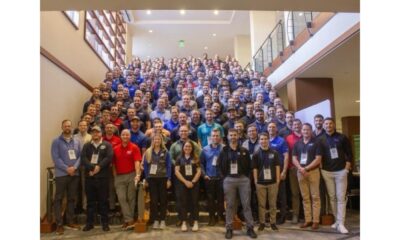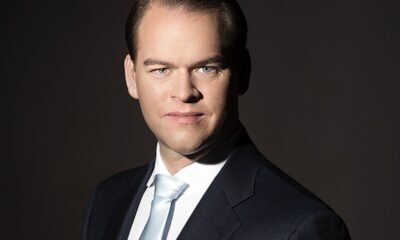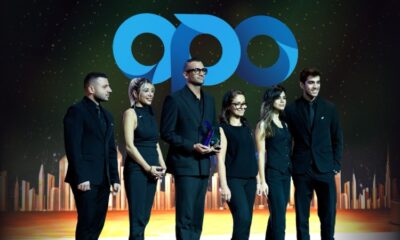Business
Beyond the Numbers: Earl Fenner Illustrates What True P&L Ownership Looks Like in a High-Stakes Industry

Owning a Profit and Loss (P&L) statement is about far more than managing a spreadsheet or tracking financial outcomes. It reflects a deeper level of accountability and influence that spans strategy, execution, and leadership. As Earl Fenner notes, true P&L ownership combines the precision of financial oversight with the agility of operational decision-making.
It demands a mindset that balances short-term results with long-term sustainability, as well as the interpersonal skills to align teams, manage resources, and adapt to change. The most effective P&L leaders are those who make decisions with a full understanding of their ripple effects—from customer satisfaction to employee engagement to financial performance.
What P&L Ownership Means
P&L ownership involves being fully responsible for both the revenue and cost side of a business unit, making decisions that directly affect profitability, and owning the outcomes—good or bad. This level of accountability is especially important in high-stakes industries where operational decisions can carry considerable financial and reputational risk.
Many assume P&L ownership is strictly a finance role, but it often sits at the junction of strategy, operations, and people management. In a logistics company, a regional director might be responsible not only for meeting delivery targets but also for managing fleet costs and negotiating vendor contracts—all of which impact the bottom line. That interplay between operational decisions and financial outcomes is where true ownership lives.
True ownership also includes a mindset shift. It’s about thinking and acting like a business owner, not just a manager. That means being proactive about identifying risks, seizing growth opportunities, and making tough calls when necessary. Leaders with this mindset don’t wait for directives—they create them.
Key Responsibilities That Define Ownership
Owning a P&L means fully embracing how a business unit performs—from top-line revenue to bottom-line results. It’s not just about hitting numbers; it’s about understanding what drives those numbers and making decisions that shape them. Leaders with true P&L responsibility are expected to oversee customer relationships, sales pipeline value, optimize operations, and manage resources to ensure financial health. They need to challenge assumptions and make adjustments as market conditions shift.
Someone leading a product line in a manufacturing firm might be responsible for pricing strategy, inventory management, and supplier negotiations. Each of these elements influences both cost and revenue, and they require constant cross functional collaboration with departments that don’t always report directly to the P&L leader. Success in this space often hinges on the ability to lead through influence & trust rather than authority.
This kind of role demands a wide lens. It’s not only about financial control but also about owning the full value chain—from how a service is delivered to how employee engagement affects productivity and, ultimately, profitability. The ability to connect daily operations to long-term goals is where strong leadership emerges.
Skills and Traits That Drive Success
Strong P&L leaders blend financial acumen with the ability to lead teams and navigate complexities. They know how to interpret the numbers and use that information to shape strategy and guide execution. But just as important is their ability to rally people around a common goal, especially when trade-offs are involved. Emotional intelligence, resilience, and clarity of communication often become key differentiators in such roles.
In high-pressure settings, decisions often need to be made with incomplete information. That’s where judgment, agility, and a clear sense of priorities become critical. A leader who can balance cost-saving moves with long-term growth investments is far more valuable than one who simply cuts expenses to meet short-term targets. The best leaders know when to take calculated risks and when to hold the line.
What separates top performers is their ability to connect daily operations with broader business outcomes. They don’t just react—they anticipate. Whether it’s adjusting a pricing model or reallocating resources across teams, they act with a clear understanding of how each move impacts the bigger picture.
Factors That Shape Ownership
When roles are ambiguous or decision rights are unclear, accountability tends to scatter. Companies that prioritize ownership make it easy to understand who is responsible for what, and they empower those individuals to make impactful decisions. Organizational design must support autonomy while maintaining alignment with broader goals.
Culture also plays a defining role. In organizations where initiative is rewarded and failures are treated as learning moments, leaders are more likely to take bold, calculated actions. In contrast, overly hierarchical environments, where approvals are slow and risks are punished, tend to stifle true ownership and innovation.
When senior leadership visibly supports and models the ownership, it cascades throughout the organization. Teams start to view their own contributions through a business lens, shifting from task completion to outcome orientation. That shift can transform not just performance, but the way people solve problems. It changes the rhythm of decision-making and encourages shared accountability. In this environment, an organic fly-wheel effect fuels growth for future leaders.
Common Hurdles Faced by P&L Leaders
Balancing short-term results with long-term stability is one of the toughest challenges. Leaders often face pressure to deliver immediate gains, whether through aggressive cost-cutting or rapid expansion. But without a clear strategy, those moves can backfire, undermining future growth or weakening the customer experience. The tension between urgency and sustainability is a constant balancing act.
Resource constraints and imperfect data are also frequent obstacles. A leader might need to commit to a major investment decision without having every variable nailed down. In such cases, experience, instinct, and a clear understanding of business fundamentals become vital tools. Data-driven yet flexible thinking is often the edge that allows successful execution under uncertainty.
At times, aligning local decisions with broader company goals can feel like walking a tightrope. A regional manager might want to invest in a market-specific initiative that conflicts with corporate cost-saving mandates. Navigating those tensions requires negotiation, creativity, and a deep understanding of both the local landscape and the company’s larger priorities.
Preparing Future Owners
Stretch roles that combine financial targets with operational complexity can accelerate growth and reveal whether someone is ready for broader responsibility. Mentorship also plays a crucial role, especially when it comes to learning how to balance autonomy with accountability. Practical exposure to real-world challenges builds decision-making confidence.
Key performance metrics make a difference. When aspiring leaders understand how their actions translate into measurable impact—whether through margin improvement, customer retention, or operational efficiency—they start thinking and behaving like owners. That shift in mindset often marks the beginning of true leadership potential. Measuring outcomes rather than activity becomes the foundation of development.
Organizations that invest in growing internal talent often find that their best P&L leaders are those who came up through the ranks, learning the business from multiple angles. They carry with them a deeper understanding of how each part contributes to the whole, and that perspective is difficult to teach in a classroom. Such leaders tend to build stronger multi-departmental relationships and make more grounded, scalable decisions. For more information, please contact Earl Fenner directly.
-

 Business4 weeks ago
Business4 weeks agoGoing Beyond Expectations: Apex Service Partners and Putting People First
-

 Apps4 weeks ago
Apps4 weeks agoGoogle Maps will have AI-powered Features for the First Time in India – 10 Upcoming Updates for the App
-

 Business4 weeks ago
Business4 weeks agoAccelerating Legacy Application Modernization with AWS Migration Services
-

 Business4 weeks ago
Business4 weeks agoKurt James Wichman Explains How Global Brands Go Local
-

 Business4 weeks ago
Business4 weeks agoBlack Banx Group — Third Quarter 2025 Results
-

 Entertainment3 weeks ago
Entertainment3 weeks agoVISHAAD, Starring Rajeshwar, Ashish Vidyarthi and Ketaki Narayan, Heads to KIFF 2025!
-

 Real Estate3 weeks ago
Real Estate3 weeks agoStephen Monro on the Evolution of Mediation Services in Real Estate
-

 Tech4 weeks ago
Tech4 weeks agoWhat’s New: Google Photos and Google Maps will Soon Get New Logos












